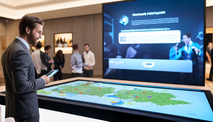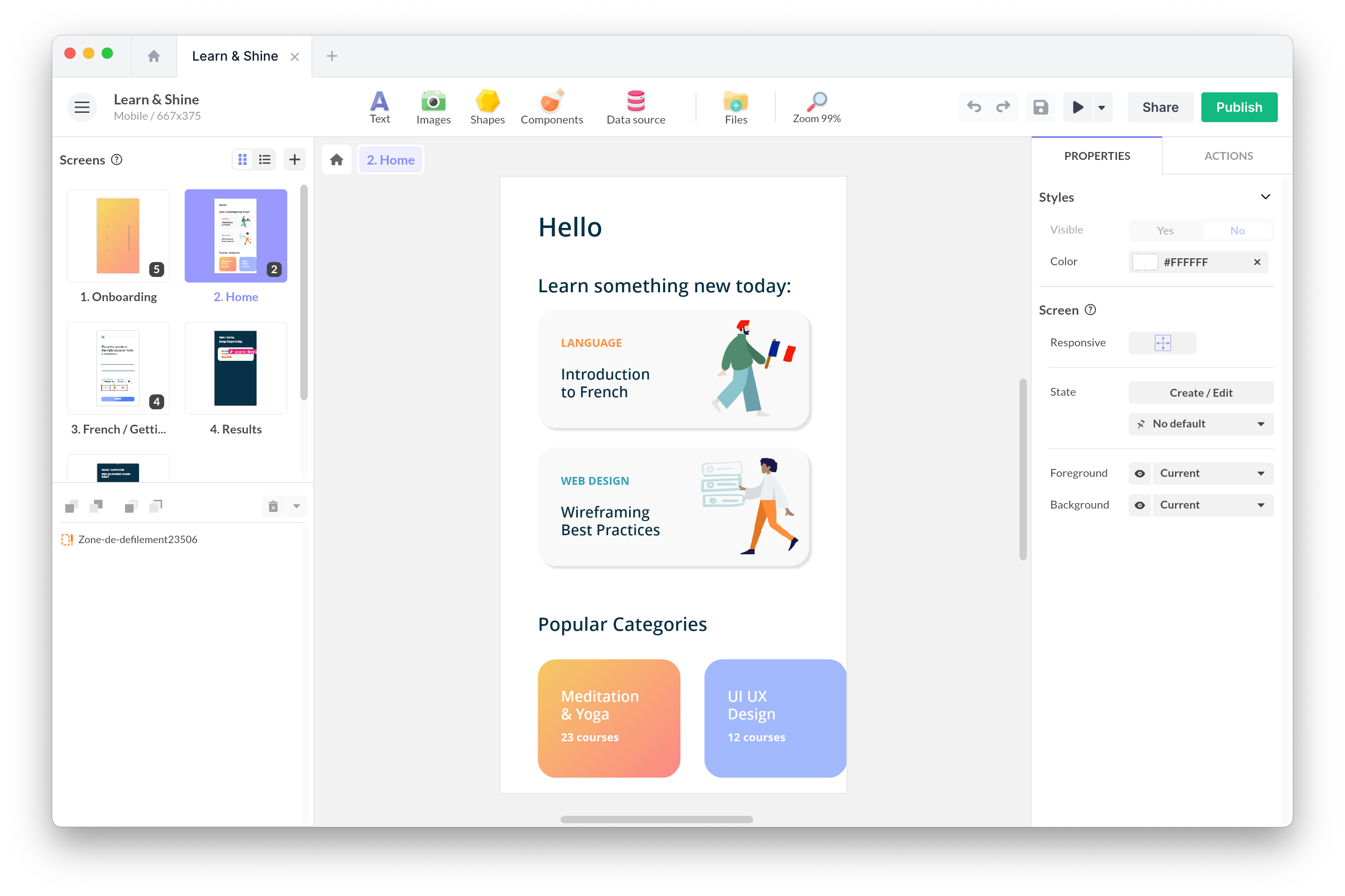Thu, Mar 20, 2025
Design a Touch Screen Experience That Truly Engages Users

Creating an interactive touchscreen experience for the first time can be both exciting and stressful, especially for marketing professionals without a technical background. 😨
Touchscreens have revolutionized how we present information across industries—retail, education, museums, real estate, and trade shows. They offer an innovative and dynamic way to showcase products, educate users, generate leads, or facilitate sales.
The good news? Building an interactive touchscreen experience is now easier than ever thanks to no-code software solutions. 🚀
This guide will walk you through the creation of your first interactive touchscreen experience, tailored to your needs and objectives.
Step 1: Define Your Objectives
An interactive touchscreen is more than just a digital presentation—it’s an immersive experience that engages users and conveys complex ideas interactively.
Ask Yourself the Right Questions
- ✅ What is the primary goal? Are you showcasing a new product, educating users, or generating leads? Your objective will define the design and features.
- ✅ Who is your target audience? Will they be tech-savvy or unfamiliar with touchscreens? This will affect UI design and navigation simplicity.
- ✅ Where will the screen be placed? A self-service kiosk in a shopping mall requires a different approach than an interactive museum exhibit.
Step 2: Choose the Right Hardware
Just like a website needs a good computer to run smoothly, your interactive experience needs the right touchscreen hardware to perform well. Here are a few things to consider:
1. Screen Size & Resolution
- Large screens (32” and up): Best for public displays, trade shows, and museums where multiple people might be interacting at once.
- Smaller screens (10”-27”): Great for personal use, product demos, or information kiosks where users are closer to the screen.
2. Operating System Compatibility
- Windows: great for powerful, interactive applications.
- Android: common for kiosks and tablets, offering a smooth user experience.
- PWA (Progressive Web App): a flexible option that works across devices through a web browser.
3. Connectivity:
Some interactive experiences need a constant internet connection (like a product catalog pulling live inventory), while others should work offline (like a museum exhibit that doesn’t rely on Wi-Fi). Make sure your software supports offline mode if needed!
Step 3: Pick the Right Software
Now that you’ve got your touchscreen hardware sorted, it’s time to choose the right software to bring your interactive experience to life!
There are several no-code platforms that allow you to build interactive content without writing a single line of code. Here’s a quick look at some of the top options:
- PandaSuite: The most flexible and comprehensive solution for creating multi-platform interactive experiences without coding. With an intuitive interface and advanced features, PandaSuite lets you design rich interactive applications for PWA, Android, and Windows, with or without an internet connection.
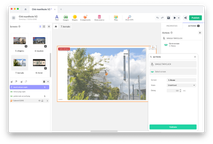
- Intuiface: A tool that offers an interactive and visual approach, suitable for creating engaging presentations.
- TouchDesigner: A powerful software designed for advanced digital creators looking to leverage 3D and complex animations, though it requires technical expertise.
Key Features to Look for in Software:
Before choosing a platform, make sure it has:
- Drag-and-drop interface (no coding required)
- Multi-touch gestures (pinch, swipe, drag-and-drop)
- Offline mode support
- High-resolution display capabilities
Why Choose PandaSuite?
PandaSuite is one of the most flexible no-code tools for creating touchscreen experiences across PWA, Windows, and Android. Whether you’re building a digital kiosk, an interactive presentation, or a storytelling app, you can design it all—without needing a developer.
✅ No-code editor that’s intuitive and easy to use
✅ Works both online and offline
✅ Supports multimedia content like videos, animations, and audio
✅ Exports to Windows, Android, and PWA
👉 Try it for yourself: PandaSuite Touch Screen Software
💡 Want to jump-start your project? Download our free multimedia kiosk template and customize it to fit your needs: Download the free PandaSuite Multimedia Kiosk template
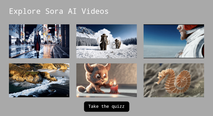
Step 4: Design an Engaging Touchscreen Experience
Now for the fun part—designing your interactive experience! 🎨
Here are some best practices to keep in mind:
1. Keep Navigation Simple & Intuitive
- Use large, easy-to-tap buttons (at least 48px).
- Make sure users can always find a “Home” button in case they get lost.
- Avoid clutter—less is more when it comes to touchscreen design!
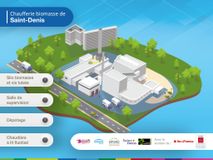
2. Make It Engaging
- Add interactive elements like quizzes, product configurators, or games.
- Use animations and transitions to make the experience feel fluid and polished.
- Consider gesture-based interactions like swiping and pinching to zoom.
3. Prioritize High-Quality Visuals
- Use stunning, high-resolution images & videos
- Keep text short and to the point—nobody wants to read paragraphs on a touchscreen.
- Design with contrast & accessibility in mind.
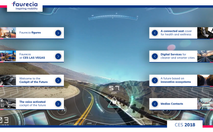
Step 5: Test & Deploy Your Interactive Experience
Before you go live, make sure everything works perfectly by testing:
✅ Touch responsiveness – No delays or lagging interactions.
✅ Navigation flow – Is it intuitive? Do people get stuck anywhere?
✅ Offline performance – If it needs to work without Wi-Fi, test that thoroughly.
Prepare for the Real World
- Train your staff to troubleshoot issues and reset the screen if needed.
- Have a backup plan in case of technical problems.
- Keep content fresh and updated to maintain engagement.
Final Thoughts
Creating an interactive touchscreen experience doesn’t have to be overwhelming. With the right strategy and tools, you can design an experience that captivates your audience and enhances engagement.
💡 Need help? Contact our team for expert advice!
✅ Want to bring your project to life? Try PandaSuite’s Touch Screen Software and create interactive experience with ease!
